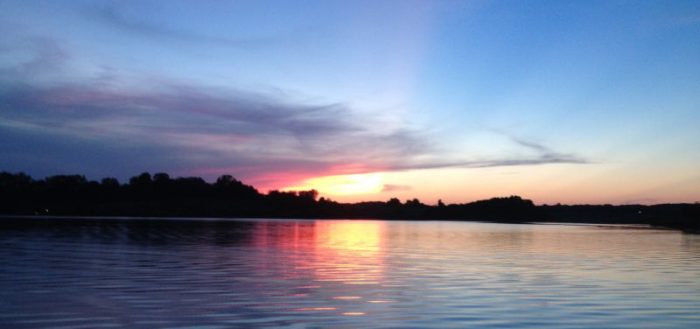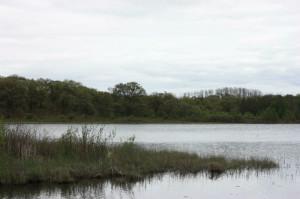The rivers of our childhood were the Shellrock, Winnebago, Cedar and on rare occasions, the Mighty Mississippi. A few lakes got thrown into the mix from time to time. The Winnebago River flowed on the border of the family farm and bisected one small corner. It was our playmate and source of sustenance like it had been for our father, grandparents and great-grandparents. We have four generations of river stories in our heads.
Most of the river stories are entertaining. Some are not. My father and grandfather sometimes talked about cholera, that insidious water-borne disease which swept the country in waves until into the twentieth century. It wiped out hogs and people and made our great-great grandmother an orphan. The Rockford, Iowa paper from the 1880’s said cholera ridden carcasses of hogs were dumped into the Shellrock River between the McElroy rockworks and Graham’s mill by a monumental wanker. (Well, I added the wanker part.) Readers were reminded this was a criminal offense.
And speaking of monumental wankers…. During the dust-bowl drought years, which started in 1931 and lasted until 1940, many Iowa aquifers and wells ran dry and farmers depended on rivers to sustain their meager crops and livestock. The McElroy farm on the Winnebago River (then called Lime Creek) fell into this group. Upstream, two processing companies cut corners to increase profits. Under cover of weekend nights, they would release by-products into the river which poisoned the fish and wildlife. The livestock refused to drink the water and either died of thirst or had to be slaughtered. My father says he would rather live through ten floods than one drought.
A different threat now faces waterways. Do you remember when oil spills like the 1989 Exxon Valdez disaster were a rare and outrageous events? In that spill, 11 million gallons of oil devastated 460 miles of Alaska coastline. In the 21st century, oil pipelines crisscross Middle America like a yard run amok with moles and gophers. Obviously these pipelines must cross many waterways. Why, you might wonder, is that a problem? 
I began to ponder the question following the Kalamazoo River disaster in 2010. In that incident, 1,100,000 gallons of Canadian crude gushed from rupture in the Enbridge Inc. pipeline. The problem was not addressed for eighteen hours. Alarms had sounded, but operators thought it might be a bubble in the line and increased the pressure to clear the supposed bubble. Parts of the affected area are still closed, as far as I can determine. According to the EPA, it was the costliest oil spill cleanup up to that date. Thank goodness for the EPA or the Kalamazoo River would be DOA.
My pointy finger went into revolt when I tried to count the number of pipeline oil spills on a list of those which have occurred in the United States since 2000. I did find statistics and graphics at Center for Effective Government regarding the 3,300 reported crude oil pipeline spills which have occurred since 2010. All I can say to that is ‘Ruh-Roo and Zoinks’!





Keep writing. Accurate information matters.
Thanks Jeanne. We triple check all our info to be as accurate as possible.
Yes, some of the local folks there did great work a few years ago to facilitate impact studies that saved some Jo Daviess aquifers from certain pollution. It is important for us to use the scientific information from the studies to campaign for clean water, even when it is uncomfortable to do so. Thanks for your valuable comments.
The League of Women Voters of Jo Daviess County, IL has done some water quality and watershed studies. We have now trained people to be facilitators for a Watershed Game created by the Univ of Minnesota staff. Please consider the membership is open to male and female and seeks to study issues rather than take sides.